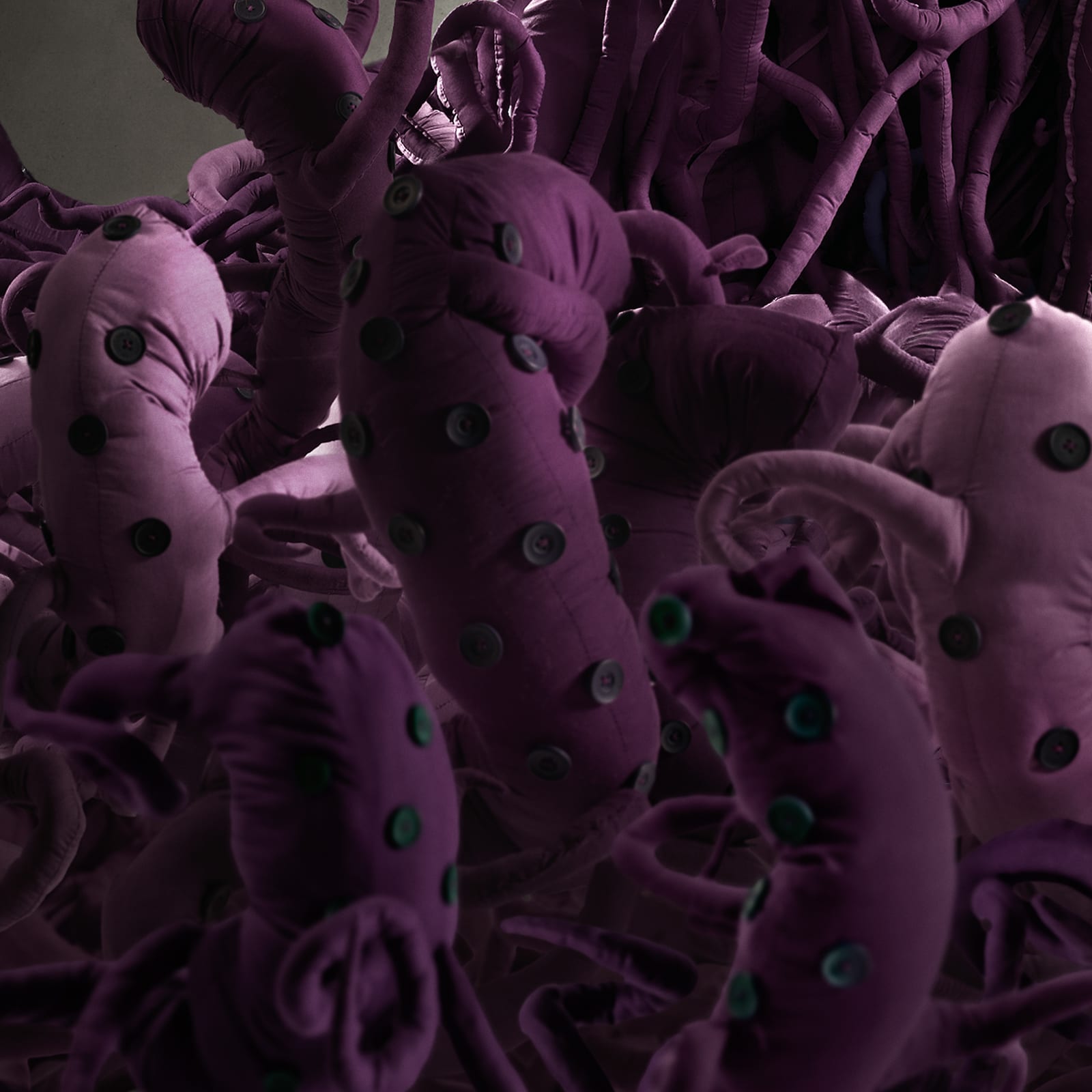Mary Sibande South Africa, b. 1982
150 x 110.5 cm
Further images
Color is essential to Sibande’s life and art. She was born Black in Johannesburg, South Africa, in 1982— part of the majority, yet oppressed by the institutionally white supremacist Apartheid system, which granted minority whites supreme political control. Sibande’s mother was a domestic worker—her uniform a standard, blue dress with white, lace apron and head scarf. Her father, dressed in green fatigues, served in the South African Army. When she was just seven years old, Sibande watched as the police turned water cannons filled with purple dye onto anti-apartheid protestors days before national elections. The purple dye was intended to make protesters easier to arrest, and indeed hundreds were rounded up and jailed, yet protestors commandeered one of the cannons and turned it on the governing party’s legislative offices. After the riot, graffiti around the city foretold, “The purple shall govern.” Six years later, Apartheid would officially end, but still today racial inequity is rampant in South Africa. Sibande expresses the frustration of contemporary Black South Africans with the color red, a choice stemming from the Zulu aphorism, “ie ukwatile uphenduke inja ebomvu,” meaning “he is angry, he turned into a red dog.”
Sibande employs the human form as a vehicle through photography and sculpture as a focused critique on the stereotypical depictions of women, particularly black women in South Africa. The body, for Sibande, and particularly how we clothe it, is the site where this history is contested and where Sibande’s own fantasies can play out. This counter history takes the form of an alter-ego in Sibande’s early work, a persona by the name of ‘Sophie’ who is dressed in various uniforms that resemble the dresses worn by domestic workers. Altering these dress styles into Victorian motifs, Sibande completely reanimates Sophie’s history through how her body is adorned and the way she occupies these narratives that were stolen and denied from her. Transitioning from blue to purple to red, Sibande introduces us not only to the many faces of herself and ‘Sophie’, but to the complex person hoods of African Women who continue to create worlds and narratives outside of the canon of Western Imperialism.
In the purple phase, we witness ‘Sophie’ as the High Priestess becoming the space between two realms; between the past and future, between what has been and what could be – she is fleeting, a personification of mystery and spirit which is unknown to the rational world. In this work, Sibande offers insight into the past, present and future, interpreting biblical and philosophical texts on wisdom into personal visions and prophecy. The Priestess represents magic and possibility through ancient cultural practices associated with sorcery whose traditions continue into the present day. Most importantly, she attempts to exploit supernatural forces by summoning the spiritual and medicinal role inherent to magic and its associated rituals, gestures and languages.













